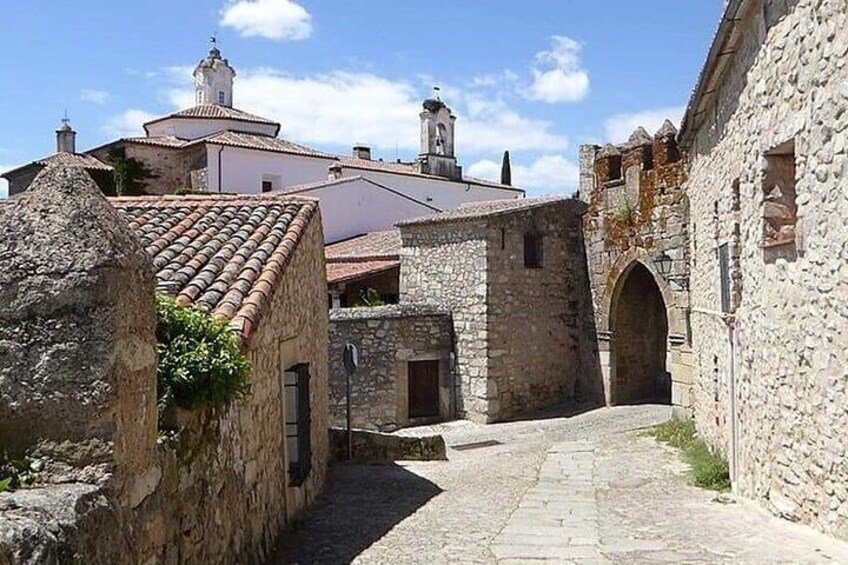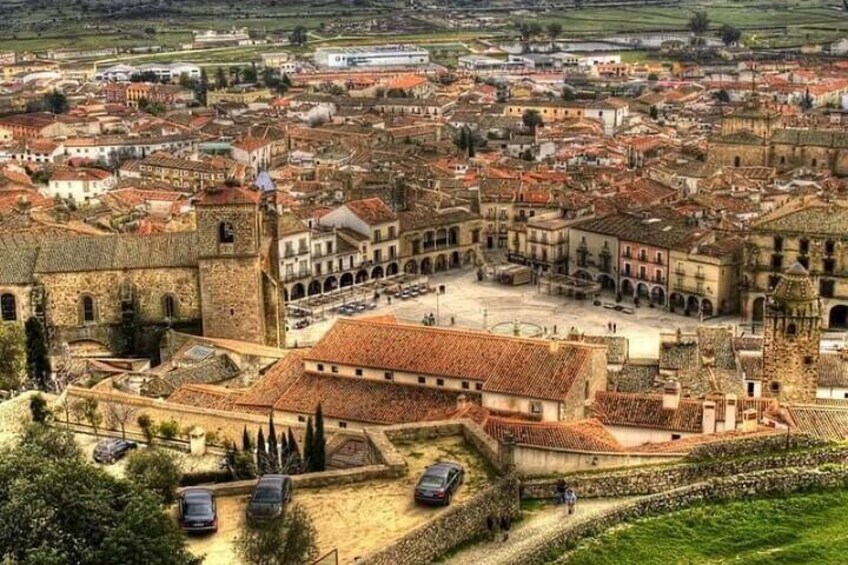Members save 10% or more on over 100,000 hotels worldwide when you’re signed in





Legendary and Monumental Historic Trujillo Panoramic Tour
Features
- Free cancellation available
- 2h
- Mobile voucher
- Instant confirmation
Overview
A very complete panoramic GUIDED TOUR, of about two hours duration, accompanied by an OFFICIAL TOURISM GUIDE, through all the places of tourist interest of the Monumental Historical Complex of Trujillo, its magnificent Plaza Mayor and its unique Medieval Village.
Our OFFICIAL TOURIST GUIDES, with extensive professional experience, will tell you in an entertaining and entertaining way the stories, exploits, legends and curiosities of celebrated Trujillons who conquered the New World and Cultural Heritage that have made Trujillo, “Cradle of Hispanidad and Conquistadors”, one of the most beautiful municipalities in Spain and in Perfect City by UNESCO, to live a historical, legendary and monumental experience, enjoying every step.
When you take our OFFICIAL GUIDED TOUR, you will get THE TOURIST PASSPORT OF TRUJILLO, which includes:
- DISCOUNTS ON TICKETS TO MONUMENTS
- DISCOUNTS IN TYPICAL LOCAL RESTAURANTS
- DISCOUNTS IN REGIONAL TYPICAL PRODUCTS STORES
Activity location
- Trujillo, Extremadura
- 4 EX-208
- 10200, Trujillo, Extremadura, Spain
Meeting/Redemption Point
- Trujillo, Extremadura
- 4 EX-208
- 10200, Trujillo, Extremadura, Spain
Check availability
Legendary and Monumental Historic Trujillo Panoramic Tour
- 2h
- Spanish
What's included, what's not
- Tourist Passport with discounts on Entrance fees to monuments, restaurants and typical products region
Know before you book
- Infants and small children can ride in a pram or stroller
- Service animals allowed
- Public transport options are available nearby
- Suitable for all physical fitness levels
Activity itinerary
Plaza Mayor de Trujillo (Pass by)
Estatua Ecuestre de Francisco Pizarro (Pass by)
Palacio del Marques de la Conquista (Pass by)
Casas del Concejo de Trujillo (Pass by)
Palacio De Los Orellana Toledo (Pass by)
Palacio de Carvajal Vargas - Palacio de San Carlos (Pass by)
Iglesia de San Martin (Pass by)
Palacio de Orellanas-Pizarro (Pass by)
Casa-Fuerte de Luis de Chaves "el Viejo" (Pass by)
Castillo de Trujillo (Pass by)
Iglesia de Santa Maria la Mayor (Pass by)
Aljibe Hispano-Musulman (Pass by)
Location
Activity location
- Trujillo, Extremadura
- 4 EX-208
- 10200, Trujillo, Extremadura, Spain
Meeting/Redemption Point
- Trujillo, Extremadura
- 4 EX-208
- 10200, Trujillo, Extremadura, Spain